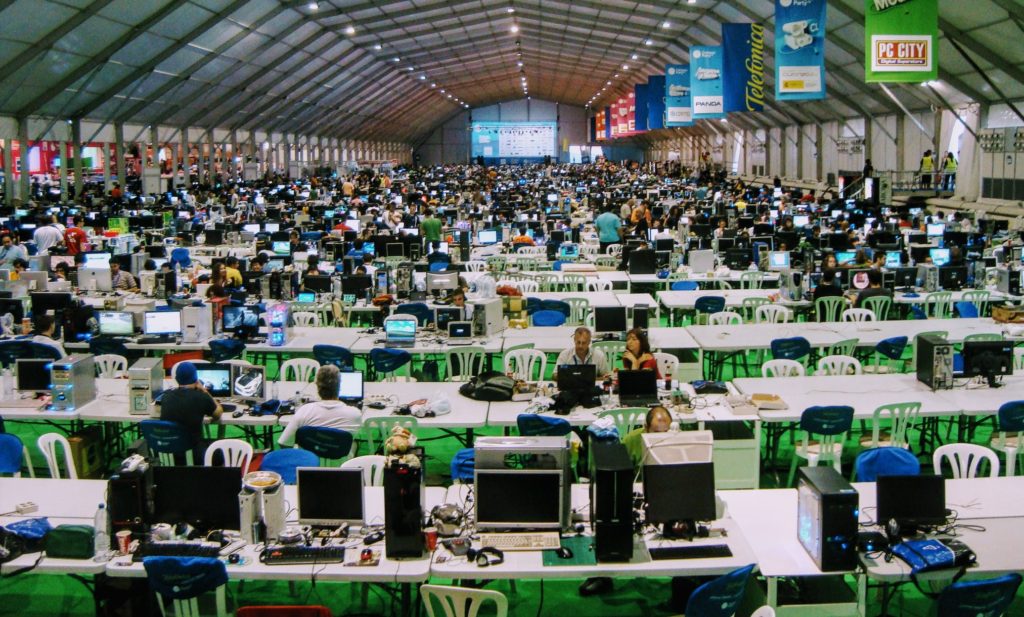Photo: Campus Party, Valencia, Spain. A 5-day hackathon that brought together +2000 people at a museum smack in the middle of a city. Attendees worked on their projects from morning until late into the night. They setup tents for sleeping in the underground parking lot of the museum. Attending Campus Party was a remarkable experience I shared with so many geek friends over the years that I’ll never forget.
Background
If you want to build something that people love, one way of thinking about the process, is to create an experience so good that inspires people to tell their friends about it.
If I say, ‘What can I do to make this [online training] experience better than the current idea of online training in your head?’ You might say something that will make it better by 10 or 20%.
But if I were to say, ‘What would it take to design an online training that you would literally tell every single person you’ve ever encountered about?’
Well, you might begin to think about the components of the training experience in more expansive ways. You would ask new questions that help you consider what would make the thing absolutely rock.
Brian Chesky and the Airbnb team asked themselves this question in the early days of designing the Airbnb customer experience. They call it “The Airbnb 12-star Experience,” an exercise that will help you break the script of your ordinary thinking to envision a remarkable customer experience.
The Airbnb 12-star Experience:
Early in the product design process, The Airbnb team looked at the key components of the guest check-in experience and asked themselves, “What would a 5-star check-in experience be like?”
5-star Check-in Experience: You knock on the door, they open the door, they let you in. Great. That’s not a big deal. You’re not going to tell every friend about it. You might say, ‘I used Airbnb. It worked.’ 6-star Check-in Experience: You knock on the door, the host opens and shows you around. On the table would be a welcome gift. It would be a bottle of wine, maybe some candy. You’d open the fridge. There’s water. You go to the bathroom, there’s toiletries. The whole thing is great. You’d say, ‘Wow I love this more than a hotel. I’m definitely going to use Airbnb again. It worked. Better than I expected.’
7-star Check-in Experience: You knock on the door. The host opens. Get in. ‘Welcome. Here’s my full kitchen. I know you like surfing. There’s a surfboard waiting for you. I’ve booked lessons for you. It’s going to be an amazing experience. By the way here’s my car. You can use my car. And I also want to surprise you. There’s this best restaurant in the city of San Francisco. I got you a table there.’ You are like, ‘Whoa. This is way beyond!’
10-star Check-in Experience: A 10-star check in would be The Beatles check in. In 1964. You’d get off the plane and there’d be 5,000 high school kids cheering your name with cars welcoming me to the country. You’d get to the front yard of your house and there’d be a press conference, and it would be just an otherworldly experience. You’d be like, ‘I’m having a panic attack from the experience.’
11-star Check-in Experience: I would show up at the airport and you’d be there with Elon Musk and I’m saying: ‘You’re going to space.’ You’d say, ‘OMG! I’m posting pics and videos about this and telling everyone I know.’
If you’re motivated to make your product something worth talking about, this simple exercise is a great way to elevate your thinking to create a next-level experience. The point of the exercise isn’t that you will be able to deliver a 9-11 star experience. That’s not likely possible.
But if you go through the exercise, you might find somewhere between the 5-star experience and whatever you imagine 12-stars looks like, and that’s a better than where you were when you started.
The best part of this exercise is that you don’t need any materials.
